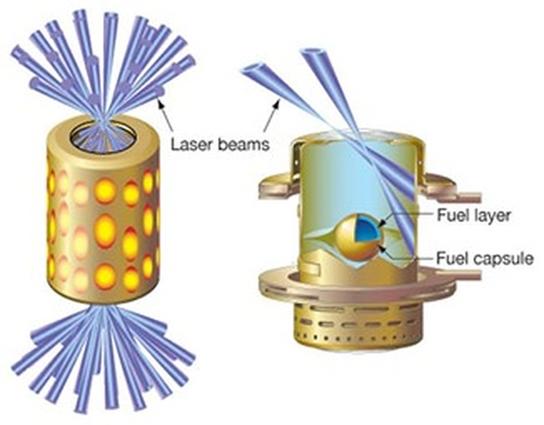
3 minute read
NUCLEAR FUSION BREAKTHROUGH
by CHOA
Nuclear Energy and Oil and Gas
Nuclear energy has entered the Canadian oil and gas conversation, as producers look for ways to follow through on their ambitious climate goals. Most of this conversation centers on the Small Modular Reactor (SMR), a design concept that could be used to produce zero-carbon heat and power for oil sands use.
Advertisement
"Absolutely, we are looking at SMRs as a low or no-emission source of the high temperature heat we need," said Martha Hall Findlay, chief climate officer for Suncor Energy Inc.”
Many people have heard of nuclear power but are unsure of how the energy is created There are two main ways to create nuclear energy, both of which use the binding power of protons and neutrons to release a large amount of energy.
Nuclear Fission
The first process, fission, occurs when high speed neutrons collide with a heavy atom, in most cases uranium-235. This causes the heavy atom to split into lighter elements, releasing extra neutrons and a large amount of energy This energy is then typically used to heat water, creating steam which is used to drive a turbine and produce electricity. The heat could also be used directly in an industrial process, like creating steam for SAGD. Elements like uranium are used for fission because atoms are large and split apart relatively easily Fission is responsible for all commercial nuclear power generation today.
Nuclear Fusion
Conversely, fusion occurs when two lighter atoms combine to form a larger atom. Fusion is also accompanied by a large release in energy. Most fusion experiments and technology use hydrogen isotopes (deuterium and tritium) which are combined under extreme heat and pressure to produce the heavier element helium, a single neutron, and energy. This is the same reaction that occurs in the sun.
Fusion has some important advantages over fission: it releases several times the energy generated by fission and does not create radioactive by-products. However, the process is extremely complex and is only at a laboratory-stage of readiness Experiments today require large amounts of energy to initiate the fusion reaction, and it’s difficult to control or recreate.
Recent Fusion Breakthrough: a Net Energy Gain
Fusion development marked a major milestone on December 5, 2022, when researchers at the National Ignition Facility (NIF) in California created a nuclear fusion reaction that produced more energy than it consumed, a “net energy gain.” Achieving this was a long-awaited step towards using fusion to produce power.
NIF used a form of nuclear fusion called inertial confinement fusion A cylinder containing a pellet/capsule of hydrogen isotopes is shot with 192 high-energy lasers and heated to 3 million degrees Celsius. This heats the outer layer of the pellet, which explodes outwards generating an inward-moving compression front, or implosion, that compresses and heats the inner layers of the pellet Theoretically, this energy can then create a chain reaction with neighboring pellets. NIF did this experiment with a single pellet.
Implications for the Canadian Oil and Gas Industry?
This is a huge accomplishment, but what does this mean for the Canadian oil and gas industry, and is nuclear fusion now ready to power our facilities? Not quite The “net energy gain” only reflects the amount of energy that entered and left the capsule. The actual amount of energy required to power the lasers was almost 100 times greater than the amount of energy that left the capsule Further, the current facility only fires once per day. It is estimated that to make this a feasible power source, the reaction will need to occur 10 times per second. The first step was achieving the ignition, and now it needs to become more efficient and repeatable. “This was one capsule, one time ”
Overall, this is regarded as a great scientific achievement, but there is still no known date of when fusion will be utilized as a reliable power source The goal of the NIF is to understand how fusion works and behaves but not to make it economically viable
The Fusion Timeline: a Few Decades?
When the director of the NIF was questioned on how long it will be until Inertial Confinement Fusion will be a feasible power solution, her response was “Probably decades not six decades, not five decades, which is what we used to say. I think it’s moving into the foreground and probably, with the concerted effort of investment, a few decades of research on the underlying technologies could put us in a position to build a power plant.”









